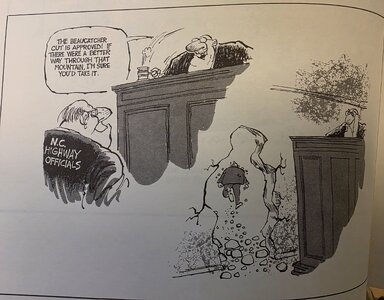donbosco
Legend of ZZL
- Messages
- 5,933
"The post highlights a severe weather event in Western North Carolina where heavy rainfall caused a large rockslide and flooding on Interstate 40, leading to its closure and stranding vehicles. This incident, occurring near the Tennessee/North Carolina border, underscores the region's vulnerability to natural disasters, exacerbated by climate change, as similar events have repeatedly disrupted this critical highway despite recent reconstructions. The ongoing challenges suggest a need for reevaluating infrastructure resilience and disaster preparedness in the face of increasing extreme weather.'





